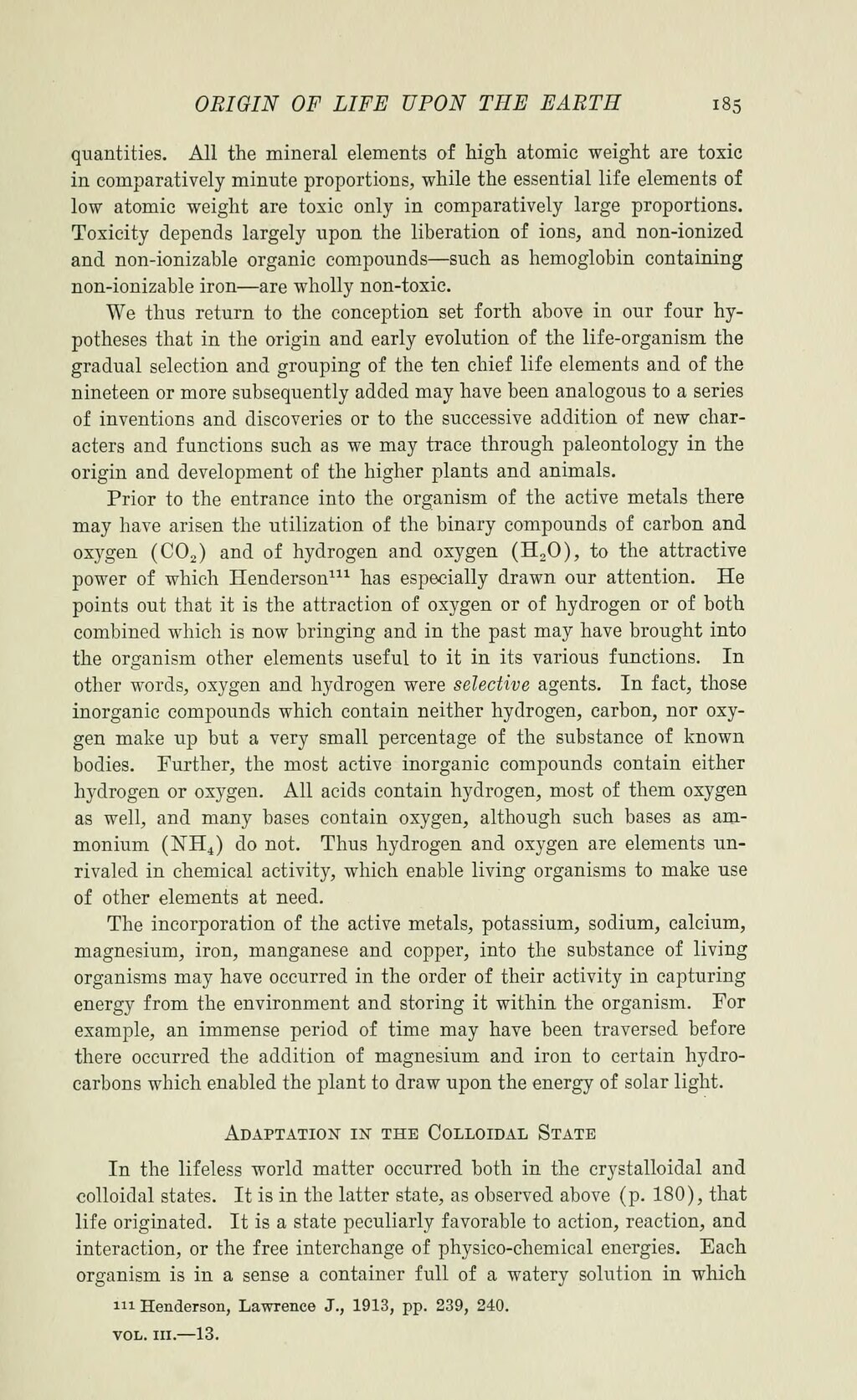ORIGIN OF LIFE UPON THE EARTH 185
quantities. All the mineral elements of high atomic weight are toxic in comparatively minute proportions^ while the essential life elements of low atomic weight are toxic only in comparatively large proportions. Toxicity depends largely upon the liberation of ions^ and non-ionized and non-ionizable organic compounds — such as hemoglobin containing non-ionizable iron — ^are wholly non-toxic.
We thus return to the conception set forth above in our four hy- potheses that in the origin and early evolution of the life-organism the gradual selection and grouping of the ten chief life elements and of the nineteen or more subsequently added may have been analogous to a series of inventions and discoveries or to the successive addition of new char- acters and functions such as we may trace through paleontology in the origin and development of the higher plants and animals.
Prior to the entrance into the organism of the active metals there may have arisen the utilization of the binary compounds of carbon and oxygen (COj) and of hydrogen and oxygen (HgO), to the attractive power of which Henderson^*^ has especially drawn our attention. He points out that it is the attraction of oxygen or of hydrogen or of both combined which is now bringing and in the past may have brought into the organism other elements useful to it in its various functions. In other words, oxygen and hydrogen were selective agents. In fact, those inorganic compounds which contain neither hydrogen, carbon, nor oxy- gen make up but a very small percentage of the substance of known bodies. Further, the most active inorganic compounds contain either hydrogen or oxygen. All acids contain hydrogen, most of them oxygea as well, and many bases contain oxygen, although such bases as am- monium (NH4) do not. Thus hydrogen and oxygen are elements un- rivaled in chemical activity, which enable living organisms to make use of other elements at need.
The incorporation of the active metals, potassium, sodium, calcium, magnesium, iron, manganese and copper, into the substance of living organisms may have occurred in the order of their activity in capturing energy from the environment and storing it within the organism. For example, an immense period of time may have been traversed before there occurred the addition of magnesium and iron to certain hydro- carbons which enabled the plant to draw upon the energy of solar light.
Adaptation in thb Colloidal State
m
In the lifeless world matter occurred both in the crystalloidal and colloidal states. It is in the latter state, as observed above (p. 180), that life originated. It is a state peculiarly favorable to action, reaction, and interaction, or the free interchange of physico-chemical energies. Each organism is in a sense a container full of a watery solution in which
111 Henderson, Lawrence J., 1913, pp. 239, 240. VOL. ra. — 13.
�� �
